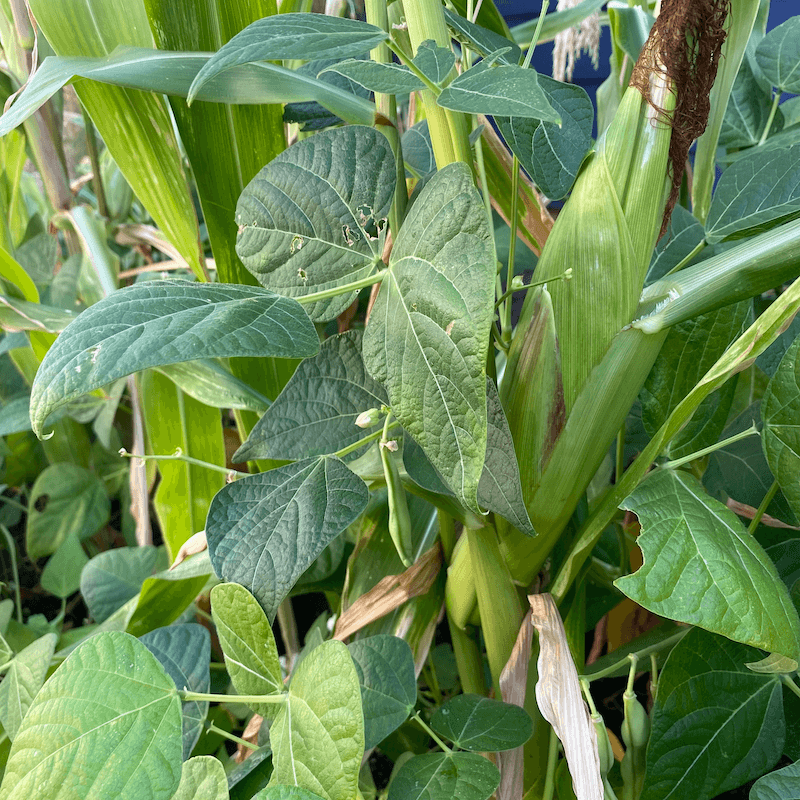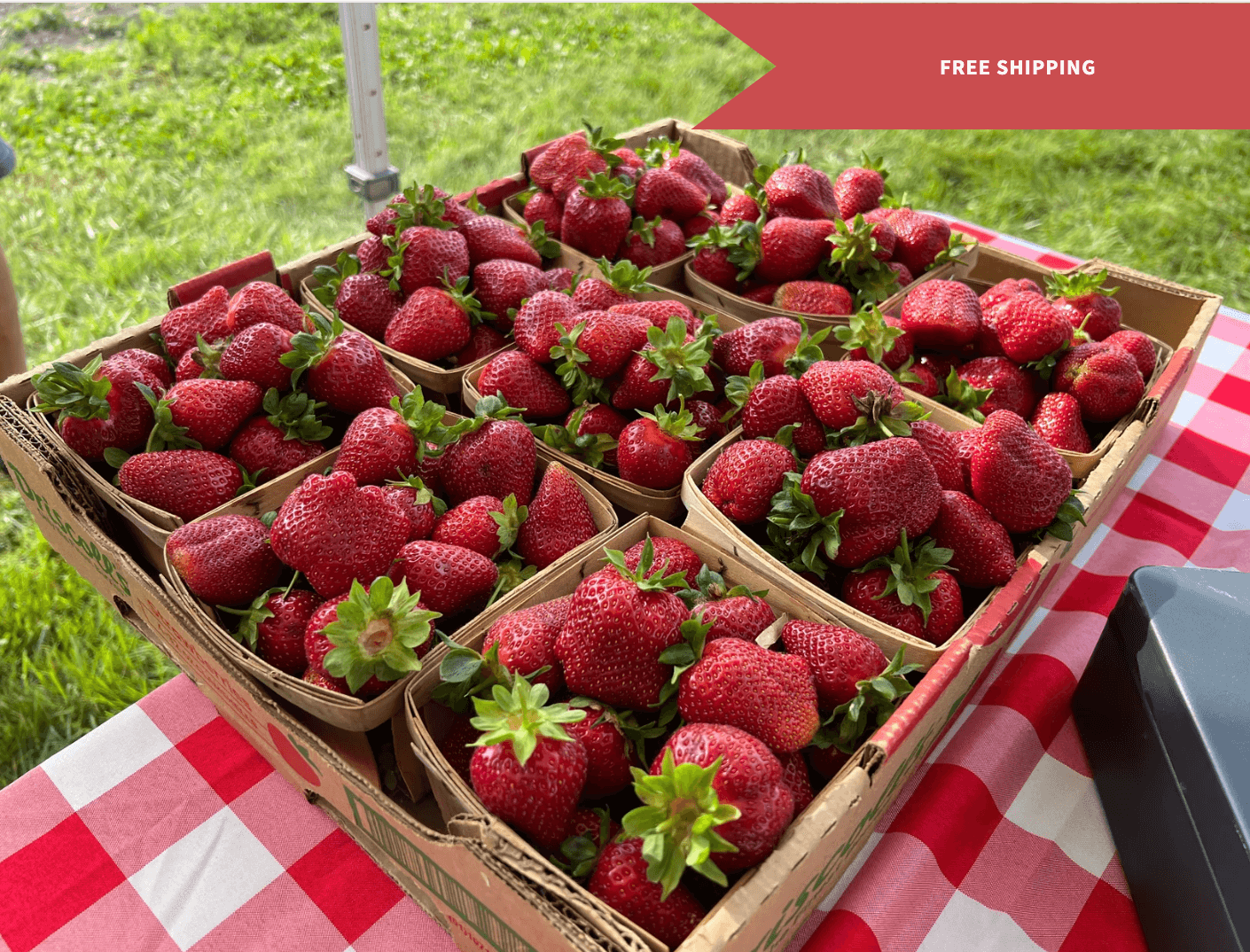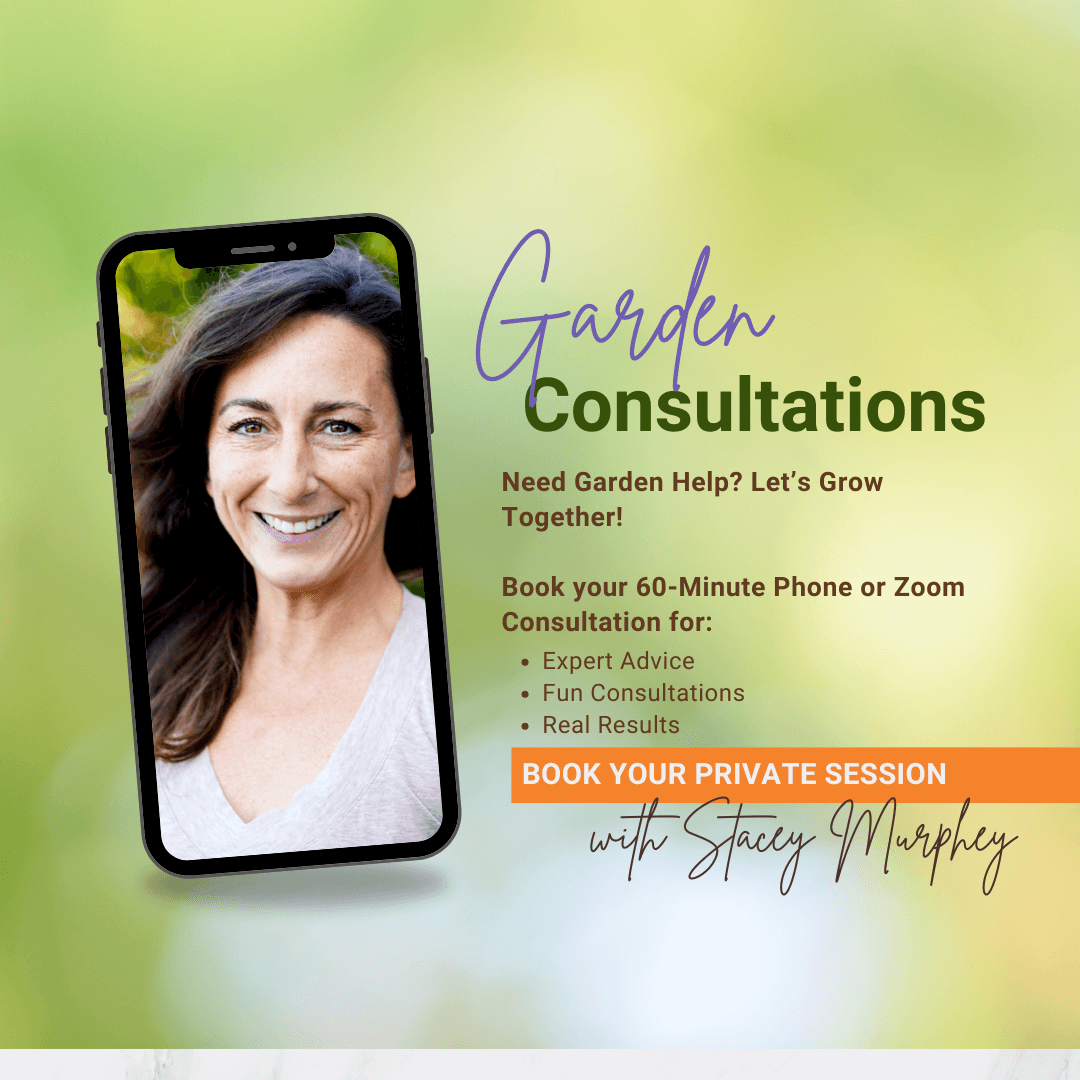Home Gardener’s
Weekly
Issue
No. 140
September
05, 2025
The Need to Grow
Our friends at Food Revolution Network have created an inspiring, award-winning film about solutions our planet desperately needs.
We’re losing quality soil—and that affects all of us.
Here’s what that means:
🌱 Food that doesn’t taste as good
🌱 More diseases as soil loses vital nutrients
🌱 Skyrocketing food prices
🌱 And eventually, if we continue on this path… no food
But there is hope. The Need To GROW is a powerful 90-minute film about soil, food, and the future of humanity—told through the journeys of three relatable characters.
This award-winning documentary took over five years to create, has been celebrated at film festivals worldwide, and is available to watch for at no cost right now.
We highly encourage you to take time for The Need To GROW—it’s moving, inspiring, and a reminder of the positive change we can all help create.

Weekly Garden Tip
Dedicating 30% of your garden to beneficial perennial herbs and flowers might feel like you’re giving up your garden space. Not to worry! There are many beneficial perennial herbs and flowers that are also edible. Of course you have lavender, oregano, thyme, rosemary, and sage, but there are many more! Nasturtium is an edible plant that pollinators really love. And there’s savory and tarragon. And let’s not forget seasonal beneficials like dill and fennel whose small flowers are liked by a large variety of beneficials that manage our garden pests for us!

Free Resource
Pest Management Guide
Simplify your garden care with the Free Pest Management Guide. This resource shows you how to prevent pest problems before they start, use nature as an ally, and take calm, confident action when needed. With the right mindset, you’ll spend less time battling pests and more time enjoying a healthy, thriving garden.
Inside this course, you learn…
✔️ How to garden anywhere—no matter how much space you have
✔️ How to increase your growing space outdoors
✔️ How to grow indoors
✔️ How to start your own seeds
✔️ How to extend the growing season
✔️ How to optimize sunlight by moving containers
And so much more!
This course is all about making gardening attainable for everyone, even with the smallest space.
Container growing helps you to see opportunities instead of limitations.
Customize your container garden to fit YOUR needs!
For your security, all orders are processed on a secured server.
Your purchase is protected by our 30-day money back guarantee.
“Your course format has been outstanding. The visual aids really helped me understand and use the information.”
– Judy
“I have only gotten part way through the first section—choosing and sterilizing containers, but I AM SO IMPRESSED with the wealth and diversity of information AND the evidence presented to support advice.”
– Julie
“Although I’ve been gardening all my life, I’m learning tips and tricks I hadn’t considered before. Thanks!”
– Rianna

Tomatoes are one of the most rewarding crops to grow—but they can also be a little tricky. From pests to pruning, there are a lot of factors that determine how big, juicy, and flavorful your harvest will be. The good news? A few simple strategies can make a world of difference in how many tomatoes you bring to the table.
In this video, you’ll discover five practical tips to help you maximize your tomato harvest this season. These techniques will set you up for healthier plants, fewer problems, and baskets full of delicious, homegrown tomatoes.
Did you know that fermentation doesn’t just preserve your harvest—it actually boosts its nutritional power?
From improving digestion and strengthening immunity to adding unique, tangy flavors to your meals, fermented foods are one of the healthiest (and tastiest!) ways to enjoy your garden bounty.
Curious how this ancient practice can benefit you?
🍓 Preorder Now: Fall Strawberry Plugs 🍓
Imagine uncovering your garden in the spring to find strong, well-established strawberry plants already waiting to burst into bloom. That’s the magic of planting strawberry plugs in the fall! Simply tuck them into your beds now, cover them with straw or row covers for winter protection, and by spring you’ll have thriving plants ready to produce a full harvest in their very first year.
We’re excited to partner with our friend Michael Kilpatrick at Farm on Central to bring you these organically nurtured plugs. Each order is shipped at the perfect planting time for your region—so you get plants that are primed for success. Start your journey to baskets of sweet, homegrown strawberries next spring with the easiest (and tastiest) fall planting project you’ll ever do.
What: One-on-One Virtual Garden Consultation
Who: Stacey Murphy
When: September 14 & 15, 2025
Everyone Needs a Little Garden Help
Is your garden in need of a quick check-in or a little fine-tuning? This one-on-one session is perfect for getting personalized advice. We’ll meet virtually, and you can walk Stacey through your garden—show her the good, the bad, and the weedy. Learn tips, tricks, and insight you need to get everything on track.
• How it works: You share your garden setup, I’ll ask questions, and together we’ll troubleshoot any challenges.
• Perfect for: Gardeners who need advice on specific problems or want a custom strategy.
• What to expect: Clarity, excitement, and actionable steps to boost your garden’s health. Plus, a ton of fun!
What: Art of Meditation Global Summit
Who: Heart Mind Institute
When: Sept 9-16, 2025
Are you ready to deepen your meditation practice and bring more peace, equanimity, and self-compassion into your life? Join the 2025 Art of Meditation Global Summit, happening online September 9–16. This free 8-day summit features 65+ world-renowned meditation teachers, offering a diverse array of traditions and approaches to help you grow, heal, and awaken.
During the summit, you’ll learn techniques to:
• Cultivate self-compassion, loving-kindness, and emotional resilience
• Stabilize your mind, enhance focus, and transform stress or anxiety
• Experience deeper meditation, insight, and awakening
Take this journey from the comfort of your own home and connect with tens of thousands of like-minded participants worldwide, all committed to personal growth and transformation. Don’t miss this opportunity to explore meditation as a path to healing, awakening, and true liberation.
What: Uncovering the Secrets to Longevity: Live Beyond the Norms
Who: Chris Burres, My Vital C
When: September 10 – September 16, 2025
You’re invited to the complimentary online event, Uncovering the Secrets to Longevity: Live Beyond the Norms, running from September 10-16, 2025. Over 50 experts, including Dr. Steven Gundry, Dave Asprey, and Ben Greenfield, will share strategies to help you feel younger, live longer, and thrive at every stage of life.
Discover insights on genetic testing, mindsets for a healthy life, and practical tips for optimizing your diet, fitness, and lifestyle—so you can stay healthy and active enough to enjoy your garden for years to come. Unlock your healthiest years yet and continue cultivating your garden of vitality!

WHAT’S HAPPENING IN HARVEST CLUB
In this week’s Garden Jam, our community dug into some great questions! We explored natural ways to deal with wasps, shared tips for growing beautiful Swiss chard, and talked about how long it takes female cucumber flowers to produce ripe fruit. We also covered what to do when cucumbers show white, mildew-like leaves and stop producing, plus a member asked for more ideas on plants that come back year after year.
It was a fun, info-packed session full of practical advice and inspiration—exactly what Harvest Club is all about!
To view the replay, log into your portal and click here.
Join us this Monday to get your questions answered and keep moving forward on your fresh food goals in Harvest Club! 🍅🥕🌽🫐🍆🌱
Not a member of our garden membership Harvest Club? You can get a one-time complimentary two-month membership with any of our courses. Harvest Club has tons of resources to help you thrive. Plus, you get access to ongoing garden support through email. Learn more here.

Dear Arti:
Question: Does companion planting matter that much? – Amanda M., Toledo, OH
Answer: Hi Amanda,
I love this question!
Ideally, you don’t want just one crop growing in an area. Each crop likes a specific amount of each nutrient. So if you just grow one crop in a bed, then your soil can end up depleted of some nutrients and become imbalanced. But if you plant a variety of crops, you can maintain soil balance much more easily.
Interplanting a variety of crops helps prevent pests and disease, as well. When you plant just one crop, the pests and diseases can just bounce from plant to plant without any obstacles. But when you plant a variety of crops in a bed and interrupt the line of a particular crop, pests and diseases now have to move around an obstacle (another plant) to get to the next one they target.
Not all crops can be interplanted. For example, asparagus and strawberries don’t like to share their space with others. And that’s okay. You can still plant beneficials around the bed to accomplish a similar result.
Now, there’s a lot of hype around companion planting. You’ll hear some people say plant this and this together. Others will say not to. While there are some varieties that just don’t grow well together, as a whole this is more about the growth habits above and below the ground being complimentary and the nutrient profiles being complimentary. But if you just start with the above and below ground growth habits, you’ll be off to a wildly successful start! For example, lettuce root systems stay mostly in the top 6 inches of soil. So, grow a crop right next to it that has a deeper root system, like cucumbers or eggplant. Corn has a strong sturdy growth habit, needs a lot of sun, and produces a lot of foliage. Planting pole beans in the same hole can give you beans in the same place since beans don’t produce foliage that will take away too much sun from the corn, but they’ll grow up the corn. As a bonus, those beans will fix nitrogen into the soil for the corn, which needs a LOT of nitrogen. So, it’s better to think about companion planting from this perspective, versus trying to memorize every plant and which plants like who and don’t like who.

In the GYOV Gardens, our bush beans are crawling right up the corn stalks for a little extra support. This natural teamwork is a reminder of one of the oldest gardening traditions: the “Three Sisters.”
The Three Sisters method comes from Indigenous wisdom and involves planting corn, beans, and squash together. Each plant plays a special role: the corn provides a natural trellis, the beans fix nitrogen in the soil to feed the trio, and the squash sprawls across the ground, shading the soil and keeping weeds down. Together, they create a thriving mini-ecosystem that nurtures the soil, conserves water, and produces a diverse harvest.


Connect with us:
This page may contain affiliate links. If you click and take action, Grow Your Own Vegetables LLC may be compensated. We only recommend events and products that we love and that we know can be helpful to you as a gardener.









